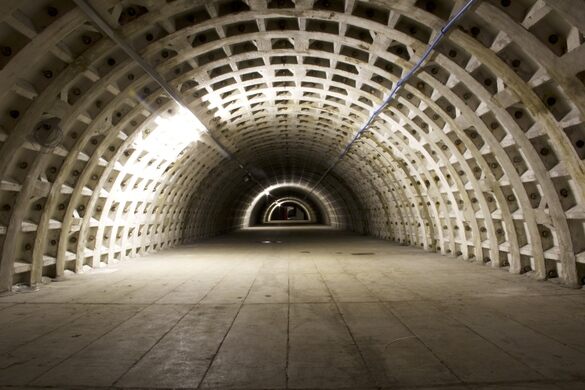
In 2015, Growing Underground in London, England opened the “world’s first subterranean farm,” by using one of London’s eight underground World War Two bomb shelters as a site for vertical farming.
The abandoned bomb shelter is 33 meters (108 feet) below ground level and uses 100% renewable energy, recycled water, and LED heating to grow its produce with hydrop onic technology. The hydroponics system uses 70% less water than traditional open-field farming, and all nutrients are kept within the closed-loop system removing any risk of agricultural run-off. This climate-controlled, pesticide-free environment produces a yield of 60 harvests a year. In contrast, traditional farming – which is subject to environmental and supply-related issues – generally yields less than 10 of the same harvests annually. Environmental benefits include the saving of air miles from importing food, and – as the produce is grown locally – it has a longer lifespan, thus generates less food waste.
The project has partnerships with major supermarket chains such as Marks & Spencer and Whole Foods Market and also supplies restaurants with microgreens. The farm is now looking for a second round of funding to open a companion supplier further in the suburbs of London.
A recent study stated that the vast increase in the global population over the coming decades means that food production will need to rise by 70% in the next 30 years. Vertical farming projects are considered to be vital in reaching this goal.
“Ultimately, we’ve got a finite amount of agricultural land and a growing population. In the UK, we’ll always be complementary to traditional farming, but if we can grow salads in cities, that frees up agricultural land for people to do different things with,” said co-founder Steven Dring.